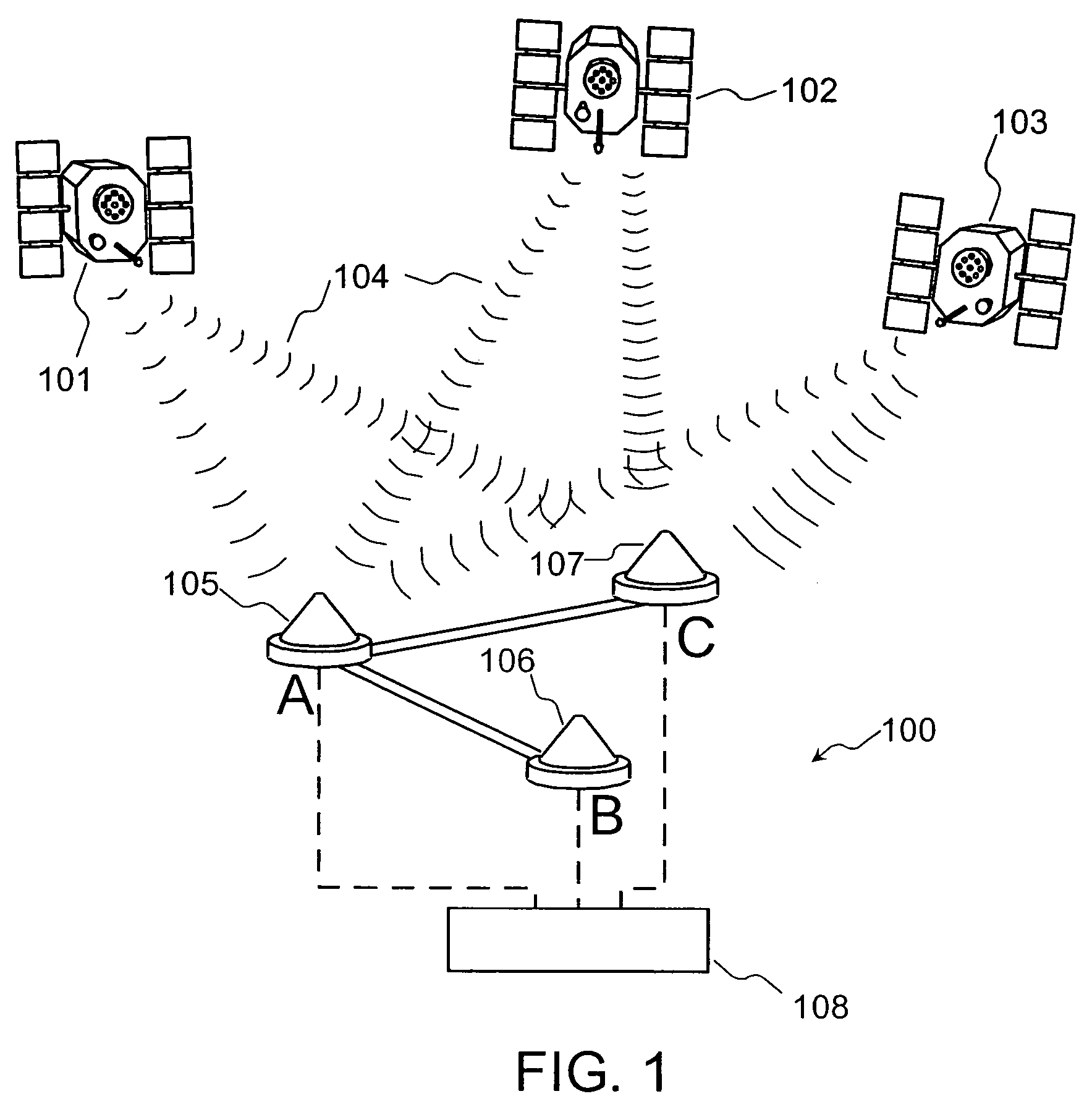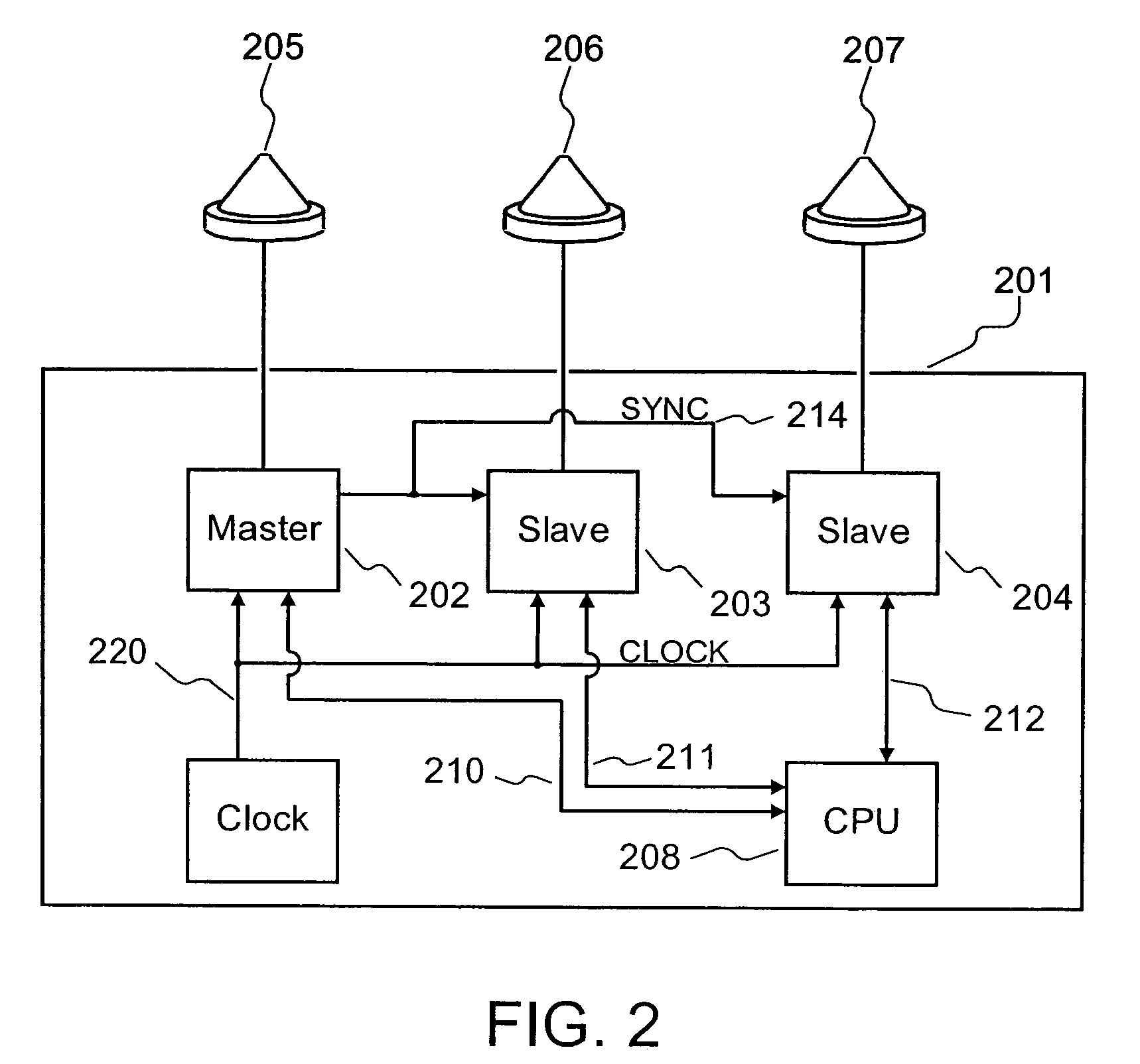Attitude determination exploiting geometry constraints
a geometry constraint and attitude determination technology, applied in the field of precision attitude measuring system, can solve the problems of accuracy, cost, ease of use, and each technique also exhibits
- Summary
- Abstract
- Description
- Claims
- Application Information
AI Technical Summary
Benefits of technology
Problems solved by technology
Method used
Image
Examples
Embodiment Construction
[0035]An exemplary embodiment of invention features a method and system for attitude determination that is effective and completely exploits geometry constraints of the antennas attached to a rigid body, and does so with measurements from all antennas processed simultaneously and optimally. This occurs both during the solution of the ambiguities, and during normal operation of the attitude device. In contrast, the methods of prior art separate antennas into pairs, then solve single-difference or double-difference ambiguities for each pair independently. In one such method, geometry constraints are taken into account only after the ambiguities are solved to validate the results. In another method, the ambiguities are solved over an antenna pair of a substantially short baseline and the resulting solution is then used to narrow the search for ambiguities over another antenna pair of longer baseline.
[0036]A preferred embodiment of the invention, by way of illustration, is described her...
PUM
 Login to View More
Login to View More Abstract
Description
Claims
Application Information
 Login to View More
Login to View More - R&D
- Intellectual Property
- Life Sciences
- Materials
- Tech Scout
- Unparalleled Data Quality
- Higher Quality Content
- 60% Fewer Hallucinations
Browse by: Latest US Patents, China's latest patents, Technical Efficacy Thesaurus, Application Domain, Technology Topic, Popular Technical Reports.
© 2025 PatSnap. All rights reserved.Legal|Privacy policy|Modern Slavery Act Transparency Statement|Sitemap|About US| Contact US: help@patsnap.com



